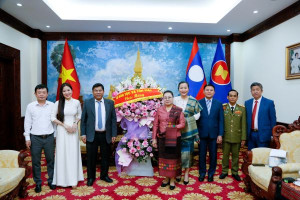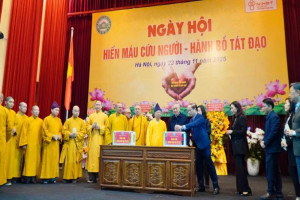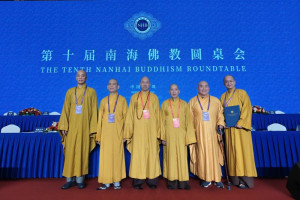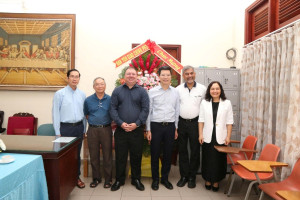
The Hue imperial relic site in the central province of Thua Thien-Hue served more than 3 million visitors in 2017, earning over VND 320 billion (US$14 million), 22.05% higher than the plan.
In the three-day New Year holiday from December 30, 2017 to January 1, 2018, the site welcomed nearly 31,000 tourists, of which 80% were foreigners.
The Republic of Korea was the biggest source market, with 207,783 visitors to the site, accounting for 25.5%. It was followed by France (9.6%), the UK (6.2%), the US (5.9%); and Germany (4.1%).
Director of the Hue Monuments Conservation Centre Phan Thanh Hải said, in recent years, the Hue imperial relic site has welcomed more and more tourists, reflecting its attractiveness, particularly the signature tour of “Hue-One destination-Five heritages”, including the complex of Hue ancient capital, Hue royal court music, moc ban (wood blocks) and chau ban (royal official documents) of the Nguyen Dynasty, and poetry in Chinese-language scripts on Hue royal architecture which was recognised as a world documentary heritage by UNESCO.
In 2017, the centre launched the programme “Dai Noi by night”, serving 28,000 tourists, and generating over VND 3 billion (US$ 132,000).
It also earned over VND 16 billion (US$ 704,000) from services offered at the site in the year.
Over VND 176 billion (US$ 7.74 million) was spent on upgrading and maintaining the site’s landscapes, such as Tang Tho palace, the Temple of Literature, Truong Co tomb, and the Hon Chen shrine. Nearly VND 150 billion (US$ 6.6 million) has been disbursed, accounting for 84.97% of its plan.
The centre welcomed 21 international delegations to the cultural and historical exchanges held in the year, with the highlight of the visit of the Japanese Emperor and Empress to the Hue ancient citadel.
International cooperation was also strengthened in upgrades and maintenance work.
In 2018, the provincial tourism sector hopes to welcome between 4 – 4.2 million visitors, of which foreigners make up of 40%-45%, up 10% and 12% from 2017, respectively, generating VND 4 – VND 4.2 trillion (US$ 176 million – US$ 184.8 million).
Source: VNA




